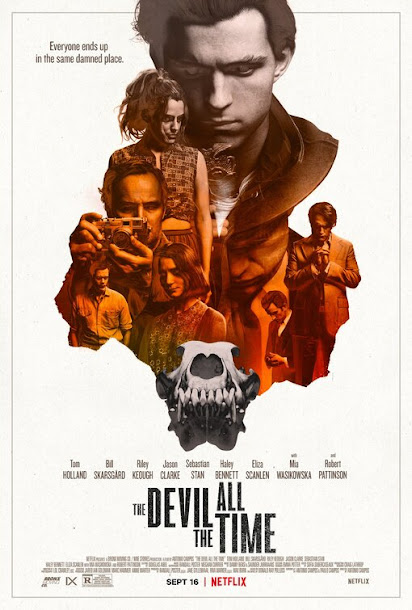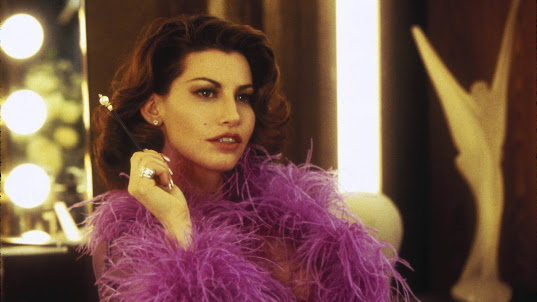Zack Snyder...making a kids cartoon?
It sounds like the set-up for some Saturday Night Live sketch. But it really happened. Fresh off 300 and Watchmen, Warner Bros. and Zack Snyder united forces again. Like their first two efforts, they would be adapting a piece of literature into a feature. Whereas prior source material for Snyder movies had been full of fascism and blue genitals, Legend of the Guardians: The Owls of Ga'Hoole (which turns ten years old tomorrow) would be based on the decidedly youth-oriented Guardians of Ga'Hoole books.
To best illustrate how much of a departure Guardians was from normal Snyder fare, let's compare needle drops. Watchmen used Leonard Cohen's Hallelujah, Legend of the Guardians used an original ditty by Owl City. Can you imagine Owl City fitting into any other Snyder feature?
If you're not familiar with your Ga'Hoole lore, well, the books, and Snyder's film adaptation, told the stories lucky hero Soren (Jim Sturgess). Raised on tales of the legendary warriors of Ga'Hoole, Soren must team up with a ragtag group of other owls to seek out these mythical warriors. This isn't just a fanboy excursion for Soren, pressing matters call for the return of the Owls of Ga'Hoole. to stop a plan being carried out by evil Owls known as the Pure Ones. These abysmal avians are led by Metal Beak (Joel Edgerton) and Nyra (Helen Mirren). Numerous battle sequences of armor-clad owls just ramming into each other mid-flight ensue.
Snyder took on the project in April 2008, just thirteen months after 300 took the world by storm. Clearly, Warner Bros. didn't want to let this filmmaker go, especially when they could pair him with behind-the-scenes talent from another recent WB hit. April 2008 was shortly after Happy Feet, an animated movie from Australian animation house Animal Logic, made oodles of money for the studio. Animal Logic's next project? The animation for Legend of the Guardians.
It's doubtful any kids out there were thinking Happy Feet would be better with more slow-motion and jars of urine. However, it's easy to see a bunch of WB executives getting giddy over the prospect of fusing together the makers of 300 and Happy Feet to create a new kids movie hit.
That explains why the studio endorsed Snyder stepping way outside his wheelhouse. But why did Snyder take on the project? A March 2010 Collider interview with Zack and Deborah Snyder sheds some light on this matter. There's an offhand mention of Zack wanting to do a movie his kids could see while Zack Snyder further explains that:
"I do love Joseph Campbell archetype stories and I felt like Soren…you have this young owl who like evil comes to his forest…to his hollow and then he and his band of friends have to go and find out whether these guardians are real and get them to fight this evil. It’s the kind of thing, I know it sounds in some ways like oh, it’s really straight forward, but those are the great, to me that’s the kind of thing I’m like oh that’s cool. I can make that awesome because I think that it’s such classic story. It’s such a mythic story in that way. So that’s what really attracted me to it to be honest"
Snyder's fixation on the Campbellian myths has been apparent throughout his career, including in leading him to tackle Legend of the Guardians. Though a departure from his other works, Snyder actually flourished in the confines of a fully computer-animated kids movie. Though more creatively restricted than his other directorial efforts, having to make something that was fit for children actually helped Snyder out immensely as a filmmaker. A number of trademark details in Snyder's work were either minimized or outright erased, including...
Pretense of Subversion
Snyder's love of Joseph Campbell individcates he knows his classical myths. By proxy, he's aware of traditional storytelling archetypes, techniques, all the stuff we see in conventional escapist material. In many of his works, Snyder is clearly intending to subvert the norms of these stories to create something subversive. This includes his approaches to adapting Watchmen as well as DC Extended Universe titles Man of Steel and Batman v. Superman: Dawn of Justice, all of which intended to wrap dirty reality around the traditionally upbeat concept of superheroes. His 2011 directorial effort Sucker Punch is the apotheosis of this. Snyder's intent for Sucker Punch entails examining how men perceive & dehumanize women in genre fiction. After establishing the norms, he then wants to subvert them by giving the women of Sucker Punch their own story where they aim to secure their freedom.
Unfortunately, these lofty aspirations get totally lost in Snyder's execution of these stories for a variety of reasons. For one thing, he doesn't have much thoughtful commentary to offer on traditional archetypes beyond "What if they were gritty?" The other problem is the discernible lack of humanity in Snyder's work. The characters in his films are just tools to blow stuff up, they're never treated as humans we can engage with. This makes something like Sucker Punch a disaster.
Rather than humanizing women, Sucker Punch opts to just objectify them. Female characters are given tired sexual assault and abuse informed backstories, names limited to "Babydoll" and ogles these individuals in scantily-clad outfits. Sucker Punch is engaging in the same kind of dehumanizing behavior it opts to subvert. It's a microcosm of how Snyder's works tend to get lost reveling in the very material they're supposed to be subverting. Similarly, Snyder's films try to aim for a sense of maturity that ends up just being a bunch of washed-out colors and regressive stereotypes.
With Legend of the Guardians, Snyder isn't looking to rewrite the book, make Soren a commentary on Young-Adult novel protagonists or even make the film "adult". In fact, the films lead character, Soren, is someone who loves the old-fashion stories about noble owl warriors that his dad tells him. Meanwhile, his grumpy brother Kludd (Ryan Kwanten) thinks those stories are simply nonsense for children. Interestingly, Kludd represents the jaded approach to classical storytelling that seeps into other Snyder works. He's the kind of fellow who might tell Clark Kent "It's not 1939 anymore!" Meanwhile, Soren is a more wholesome and upbeat individual who believes in the power of traditional stories.
Whereas Snyder's works usually favor subversion over all else, traditional storytelling is the good guy in Legend of the Guardians. Meanwhile, those like Kludd who have a more cynical approach to the same concept, they're the villains. It's a sharp reversal of who normally gets coded "good" and "bad" in Snyder's works. The supporting characters surrounding Soren and Kludd are similarly broadly-defined archetypes boiled down to "The Sage", "The Comic Relief", etc. This approach has its drawbacks, for sure, like how you can guess specific plot beats in Legend of the Guardians long before they appear. However, committing to a non-cynical approach means Guardians is a much less confusing enterprise than other Snyder works.
Without being torn between the subversive and the commercial, Legend of the Guardians can allow viewers to soak in its gorgeous visuals. And speaking of visuals...
Snyder's Visual Style Was Made For Animation
Rather than soak Legend of the Guardians in darkness like his other films, Snyder's brought a gorgeous visual sensibility thriving on a varied color scheme. These owls fly seemingly exclusively at sunrise or sunset, allowing a cavalcade of orange and pink hues to litter the sky. In interior scenes set inside trees, beams of light pour in through cracks in the bark. It all looks so radiant and warm, particualrly the hideaway camp for the various titular Guardians of Ga'Hoole. Their domain is so inviting looking, you can understand why Soren would be so enamored with it.
Meanwhile, Snyder's grandiose style of framing and blocking works so well in a fully-digital environment. The same slow-motion and explosion heavy cues that defined Snyder's live-action set pieces are still around in Legend of the Guardians. However, no longer constrained by the rules of reality that come from working with live-action people, the sky is the limit for Snyder's imagination, which leads to an abundance of memorable images. Soren can soar through a storm while the camera slows down enough for us to observe every droplet hitting his feathers. Other times, the camera can swoop around and make one feel like they're flying alongside the owls during an intense chase scene.
Gritty realism has defined so much of Snyder's work. For Legend of the Guardians, that has been put to rest. He embraces the unique visual opportunities afforded by these airborne characters and the results create some truly thrilling action sequences. To boot, Snyder's commitment to making genuinely involving action makes Legend of the Guardians a welcome departure from other computer-animated kids movies. Your usual Illumination or Blue Sky film can't let a moment go by without some fart joke interrupting the tone of a scene. For Guardians, Snyder has the confidence to let the gorgeous visuals just speak for themselves without any comedy undercutting the mood.
Snyder's Darkness Works Better In Small Doses
It turns out that Snyder's trademark darkness works better as a garnish used in bursts throughout Legend of the Guardians. Wall-to-wall misery in a live-action 3-hour superhero blockbuster can be exhausting. But as films like The Neverending Story and The Dark Crystal have demonstrated, darkness can fit right at home in family-friendly fantasy fare. Recurring doses of darkness can make these worlds feel tangibly real and that's just what Legend of the Guardians does. Metal Beak and his army actually feel like a threat while once can understand how older owl warriors like Ezylryb (Geoffrey Rush) got their weariness.
Best of all, the entertaining dissonance between cutesy CGI owls and the darker moments of Legend of the Guardians manages to sustain a whole movie. Watching Batman be all grim n' dark, where's the novelty in that? But watching a bunch of animals who look like they could slip into a Happy Feet spin-off encounter hypnotized child slaves, stab their foes to death or watch a villain scream in agony as he's dragged away by bats, that's a lot more entertaining and unique. Watching this kind of dark stuff slip into a kids movie has a genuinely exciting dangerous quality to it whereas the rampant darkness in Snyder's R-rated works just feels perfunctory.
Across his body of work, Zack Snyder has procured a large fanbase that clearly adores his works while establishing a distinct visual style that's proven incredibly influential on the film idnustry. By and large, his movies just aren't for me. But more power to those who enjoy them. Meanwhile, even someone like myself whose largely cold on Snyder's work can appreciate Legend of the Guardians: The Owls of Ga'Hoole as an enjoyably offbeat entry in Snyder's canon. A strong departure from not just Snyder's other films but also the norms for theatrical American animated movies, Legend of the Guardians is very much worth giving a hoot about.


















